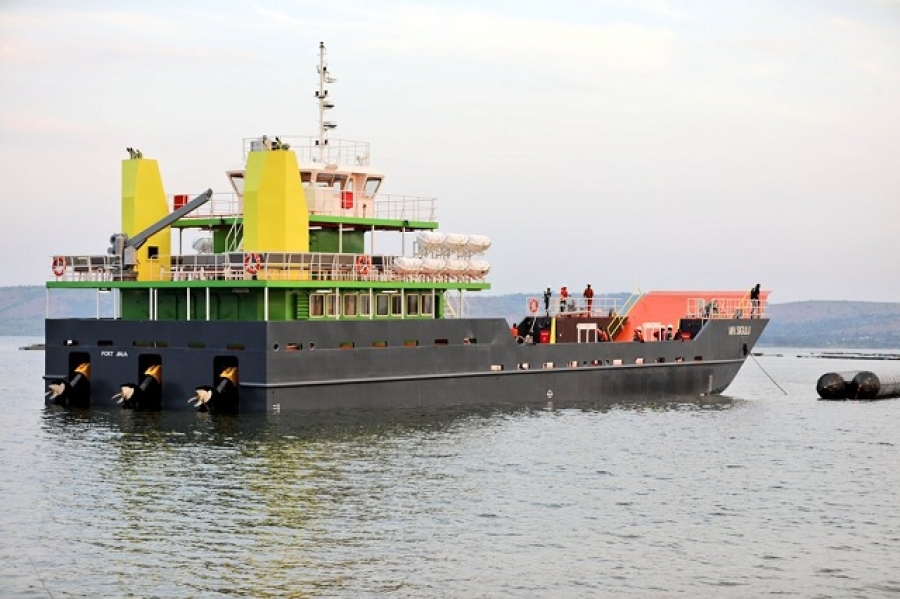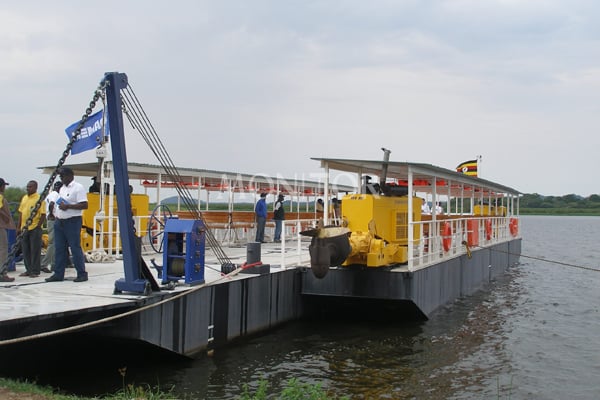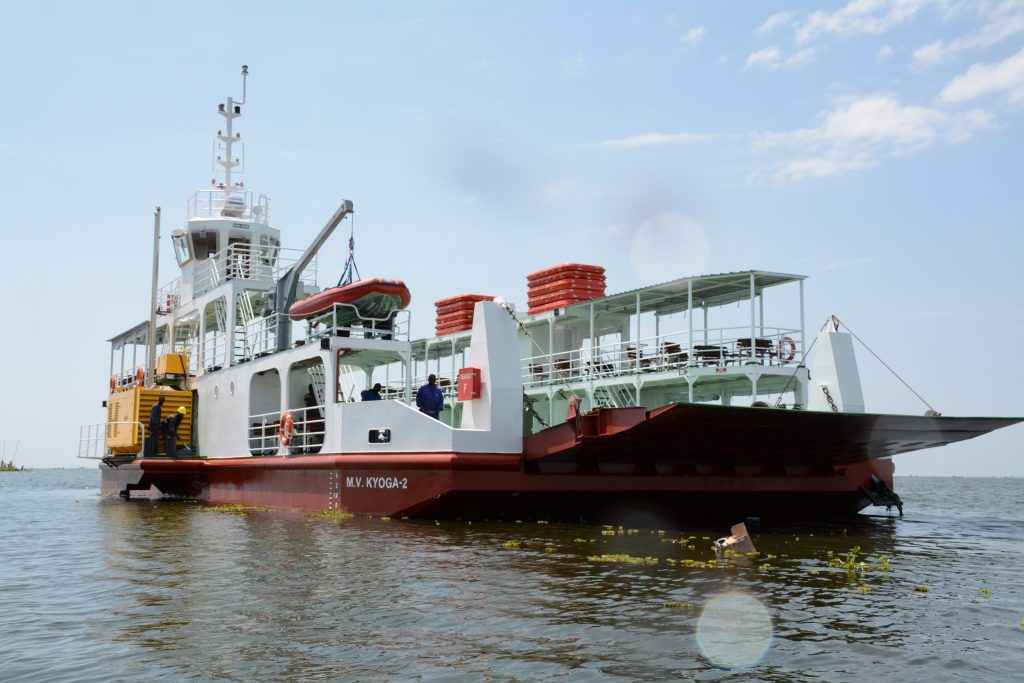Share
Lake Victoria Logistics
Lake Victoria Logistics was founded in May 2015 as Mahathi Infra
Uganda with a vision to change the petroleum logistics for Uganda and
other landlocked countries like Rwanda, Burundi and DRC that get their
oil through Uganda. In 2018, President Museveni laid a foundation stone
and on 18th/07/2024 officially launched the facility.
During the launch at Bugiri-Bukasa, Kawuku-Entebbe Road, President
Museveni expressed gratitude to Lake Victoria Logistics/Mahathi Infra
Uganda for investing in Uganda.
President Museveni also revealed that the economy of Uganda has
been able to grow progressively due to the right strategy of the National
Resistance Movement (NRM) government.
“People who don’t understand the NRM strategy always miss the point.

Albert Nile Ferry
SECO partnered with Damen Shipyards Group to build and deliver MV Albert Nile 1 to Uganda National Roads Authority (UNRA) from our shipyard in Mombasa, Kenya. MV Albert Nile 1 is a roll on roll off (RoRo) modular ferry specially designed to safely transport passengers and vehicles across Lake Albert in Uganda. The hull of the vessel consists of container sized units which are coupled together with a specially designed coupling system. The entire vessel was transported by road, Uganda being a landlocked country, to her final destination and assembled on-site. The ferry currently connects Buliisa district to Nebbi (Panyimur) in Uganda and has a capacity of carrying 250 people and 20 vehicles.

MV Sigulu
Sigulu Ferry is in the advanced stages of construction to serve Namayingo district by connecting the Namayingo mainland to Sigulu Island and Lolwe Island on Lake Victoria. The landing sites where the ferry will dock are being developed accordingly. This ferry will provide a safe means for the communities to travel at costs met by the Government. Overall, the project will positively impact the communities through increased volumes of trade, tourism, increased access to social services especially those, which are lacking or inadequate in the islands.

Laropi & Obongi Ferry
Laropi is a marine vessel that connects Adjumani District to Moyo District. It connects the landing sites of Laropi and Umi.
The ferry starts operations at 5:30am and often ends at by 7pm. It has a vessel capacity of 120 tonnes.
It carries an average of 1,500 to 1,800 people per day at the crossing with a minimum of 12 trips and a maximum of 22 trips. It takes 30 minutes for loading and offloading while the time to cross is between 10 to 15 minutes.
The ferry has a capacity of 180 passengers and cargo of 90 tonnes as per the Certificate of Sea Worthiness.
To provide for maintenance of the ferry, usually the team reserves half a day for routine maintenance or conduct one after the end of day route operations.

MV Kyoga
The ferry can carry 120 seated passengers as well as trucks and cars.
This is the second ferry supplied for the same crossing and therefore named Kyoga 2. JGH supplied Kyoga 1 in late 2011.
All the the sections of the ferry was pre-fabricated at a shipyard and assembled at JGH mobile shipbuilding site in Namasale by Lake Kyoga, Uganda.
When all the sections and the engines were done, they were shipped to the JGH site at Lake Kyoga.
The mobile shipyard was set up with all required accommodation facilities on the remote site for the staff and managers. The site was a complete camp with accommodation containers, kitchen for staff and supervisors.

MV Palm
The MV Palm was purchased by the Agriculture Ministry, according to Charlotte Kemigisha, the PRO of the Ministry of Agriculture and commissioned on 27th May 2023 by Gen Katumba Wamala, the Minister of Works and Transportation.
With a seating capacity of 519 passengers and the ability to carry 25 cars, MV Palm is the largest ferry in a fleet of 13.
The MV Palm was procured by the Ministry of Agriculture for the Buvuma Residents in a bid to promote their Oil Palm value chain development through increased access to markets.
A collaboration between the Ministry of Agriculture, the National Palm Oil Project (NOPP), the International Fund for Agriculture (IFAD), and the Ministry of Works and Transport allowed for the construction of the MV Palm. Gross weight: 665 metric tons; Carrying capacity: 239 metric tons; Seating Capacity: 519 and 25 vehicles; Engine power: The ferry is propelled by 4 engines each with a power of 235 kilowatts.

MV Mpungu
A new freight transport ship, MV Mpungu, was launched from Entebbe on the shores of Lake Victoria on Thursday ahead of its maiden voyage in April. The “roll-on roll-off” vessel – which accommodates trucks driven on at the departing port, then off at their destination – is intended to strengthen trade links between Uganda and neighbouring Tanzania.
The Mpungu has a capacity for up to 1,000 tons of containerised cargo – equivalent to 21 trailers. The 96-metre-long vessel was built in Entebbe over a period of 21 months by SECO Marine, part of the Kenyan-headquartered Alpha Group. InfraCo Africa, part of the donor-funded Private Infrastructure Development Group, and pan-African logistics company Grindrod established a joint venture known as East African Marine Transport (EAMT), which commissioned the vessel. Grindrod will be responsible for operating the Mpungu.

